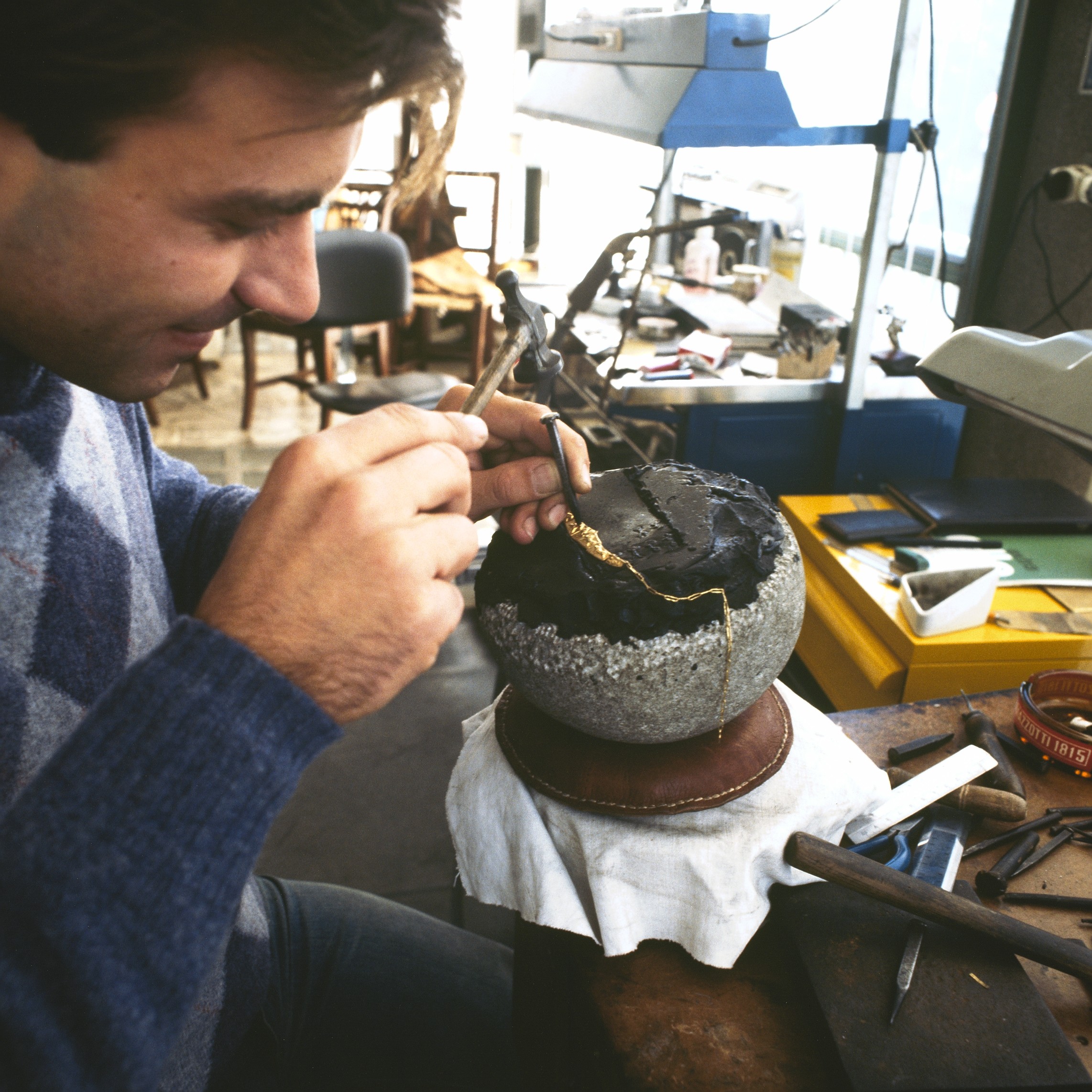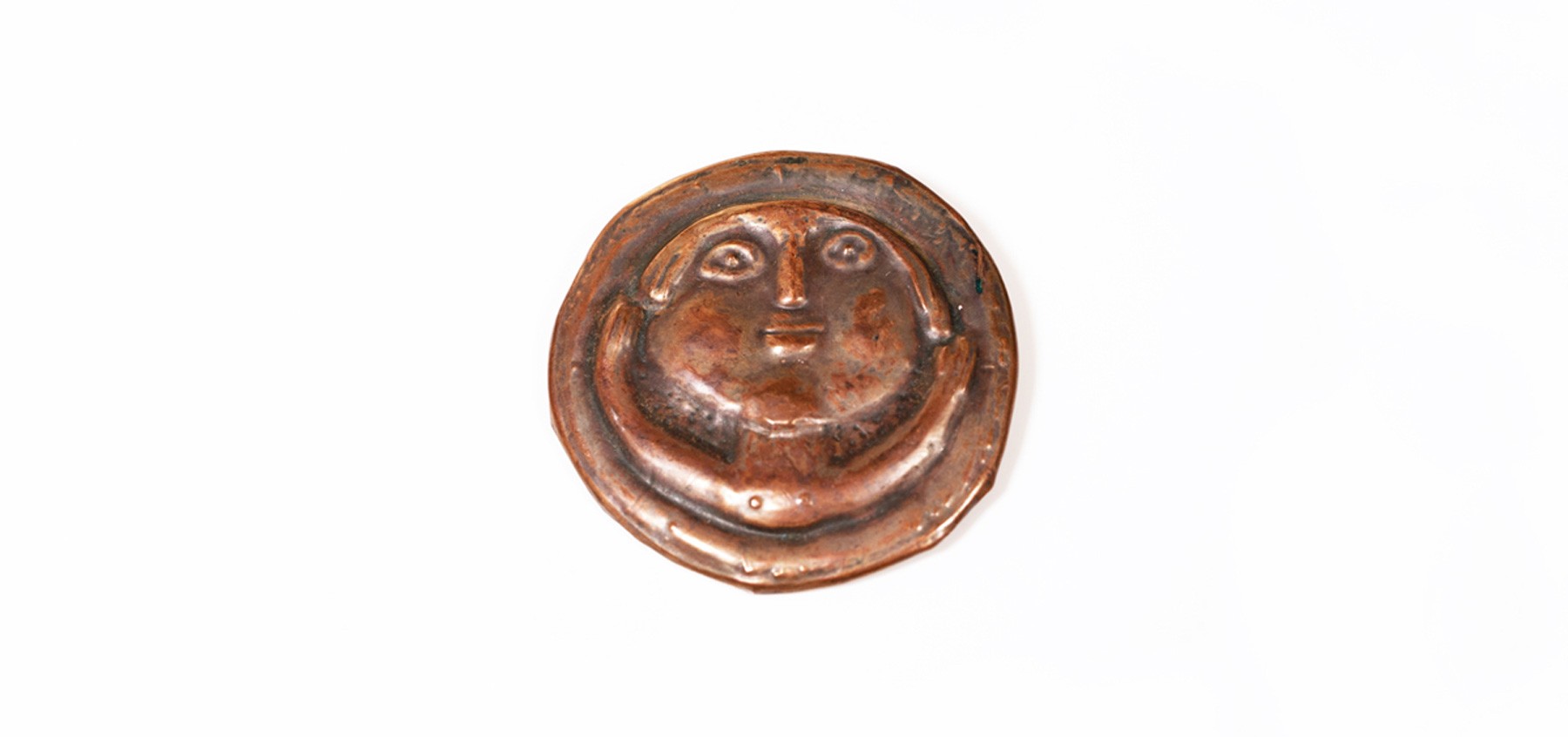Repoussé and Chasing: how Sculptural Jewelry is Born

Repoussé and chasing are two techniques of toreutics, which is the art of working metals to obtain ornamental figures in relief. It is an ancient art: among the first examples are the hammered bronze statues of the pharaohs of ancient Egypt, dating back to approximately 2600 BC. In Italy, the Etruscans became experts in bronze working, and in imperial Rome, gold and silver statues were created along with all kinds of worked metal decorations, including jewelry. The repoussé technique and chasing were then developed and refined from the Renaissance onward. In the masters’ workshops, aspiring artists learned the techniques of sculpture, which also included metalworking to create jewelry and goldsmithing objects.
Let us therefore see what these two techniques are and how they are still used today for creating contemporary jewelry.

Chased and repoussé brooch in yellow gold with aquamarine and diamonds
What are Repoussé and Chasing
These are two techniques that both serve to create figures in relief on metal sheets or objects, but they operate differently. The repoussé technique and chasing, in fact, work in a complementary manner. Repoussé shapes the metal “in negative,” engraving and “hollowing” the surface to create concavities that, when the work is finished, will appear in relief on the decorative side. Chasing, instead, works “in positive,” modeling the decorative elements down to the finest details.
In goldsmithing, the two techniques are therefore used together, on both sides of the sheet to be worked, which must be made of a malleable metal, such as gold and silver. The main tool is the
The chasing tools, in their various forms, are used both for repoussé and for chasing, which defines the details that embellish the jewelry.

Chased copper brooch by Franco Daverio in 1933
Jewelry-Sculptures between Tradition and Modernity
As we have already mentioned, there is a very strong connection, from the very origins, between goldsmithing and plastic arts, which has been passed down through the centuries from the Renaissance to more recent times. An example of this is the goldsmithing art of
Even in more recent times, repoussé and chased jewelry continues to be the symbol of goldsmithing that combines ancient techniques with the aesthetic taste of the period. To the large chokers and bracelets typical of the 1980s, smaller jewelry pieces have been added, made even more precious by friezes and precious stones.
The Heritage collection, designed by Luca Daverio, who continued his father Franco’s art, combines the Daverio family’s sculptural tradition with 2000s design: necklaces, bracelets, rings, earrings are sculpted in white, yellow and rose gold with fine chasing that creates glossy/matte effects, enhancing the materiality of the creations. These are jewelry pieces that recall an ancient art, but with contemporary forms and styles, which adapt perfectly even to more classic jewelry, such as wedding rings: with repoussé and chasing, gold rings can be personalized and thus become unique and unmistakable pieces.